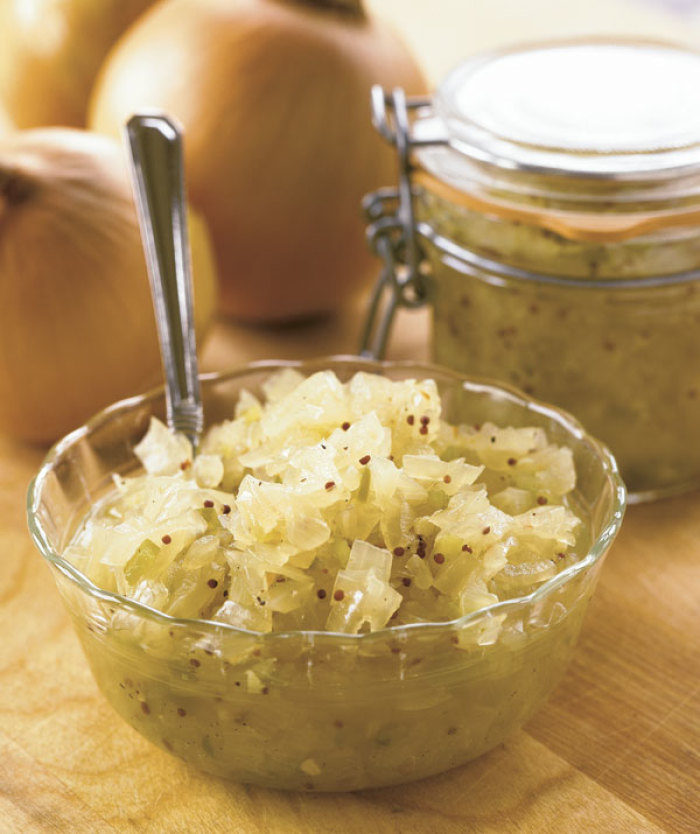
When I’ve preserved all the winter citrus I care to, I look around for inspiration. Big, fat, brown-skinned onions stored from a fall harvest are just the thing.
Before spring onions arrive, it is the brown onion with its papery skin that’s the onion of choice, since it’s easily stored over the winter. Its keeping quality is related to its sulfur content; onions with the greatest amount of sulfur store the longest because sulfur acts as both a fungicide and a bactericide. These onions also tend to have the strongest flavor.
Once cut, onions begin to oxidize and form new compounds. Sulfides in the onion mix with fluid in our eyes, making a weak sulfuric acid that causes tearing. Salting or blanching sliced onions leaches out some of those irritating elements. The result is a loss of some of the heat without a loss of flavor. With the harshness gone, you can use these onions raw in salads or sandwiches. Cover them with equal parts vinegar and water, and you can store them for up to two weeks in the refrigerator. Or freeze chopped onions in ziplock bags.
Don’t use a food processor for chopping onions. Processors release so much juice that the onions’ crisp texture is lost. Before chopping onions, refrigerate them for several hours. If they are very cold, their compounds are less volatile, and consequently, less irritating.
To dice onions, cut a thin slice off the stem end and remove the outer layer of skin. Halve the onion through the root end and lay flat side down. Without cutting through the root, make lengthwise cuts at ¼-inch intervals through the curved side. Holding the onion half together, cut ¼-inch slices horizontally, perpendicular to the previous cuts. When you slice down through the layers, the onion will fall into pieces. The root end holds it all together until you’re finished.
When making pickles or relishes, use only kosher or pickling salt. Unlike table salt, these coarse crystals contain no additives that could turn the brine cloudy and the pickles brown. The salt preserves and adds flavor and crispness. Pickling brine draws juice and sugar from the foods and forms lactic acid, a preservative.
Because this relish takes so little time, make several batches using different onion varieties. Just adhere to the recipe’s weight measurement. You’ll be surprised at how the taste varies, and you’ll have a versatile, tasty condiment stashed in the pantry or fridge.
A thin layer of Pickled Onion Relish spread on a roast beef or turkey sandwich adds punch and crunch. Create a delicious low-calorie sauce for fish by adding ¼ cup of the relish to a couple of tablespoons of melted butter, ½ cup white wine, and a little chopped parsley. Spoon over fish fillets and garnish with a few capers. Enhance egg salad with a little onion relish. Use it on smoked salmon, potato salad, and sliced tomatoes. Accompany pâté or country terrines with a ramekin of onion relish. It will work the same magic as French cornichons. And as the vestiges of winter let go and spring onions appear in the garden, the relish reminds us of those great brown-skinned bulbs of flavor to come.
This article originally appeared in Kitchen Gardener #19 (February 1999).

















Comments
Log in or create an account to post a comment.
Sign up Log in